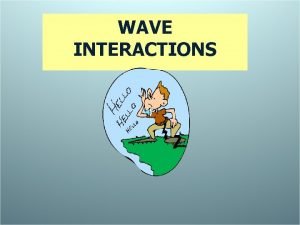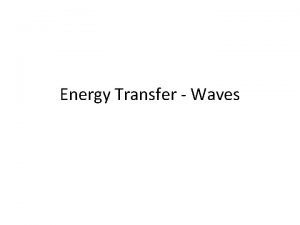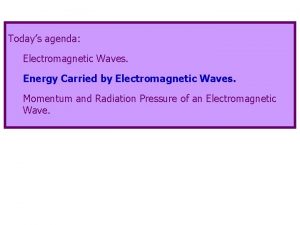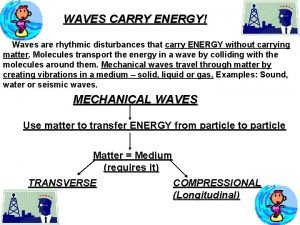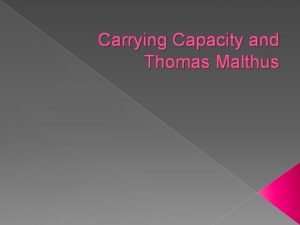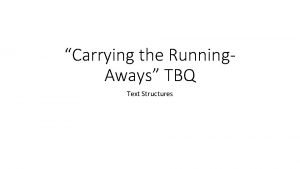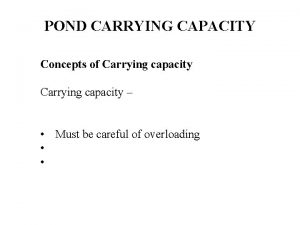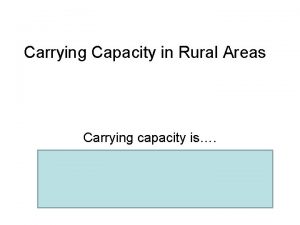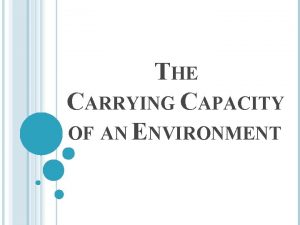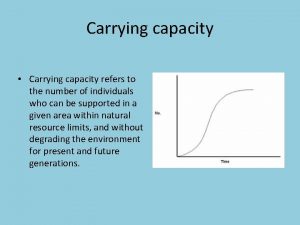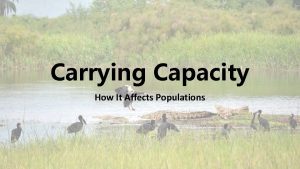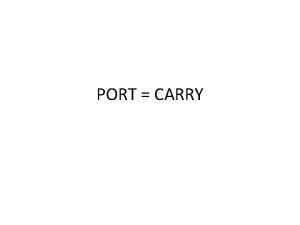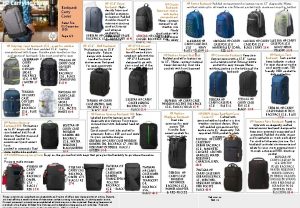Carry energy without carrying matter The matter in
















- Slides: 16

• Carry energy without carrying matter • The matter in a wave, does not actually move. The only thing moving is energy Waves

• Think about the ripples on the surface or a pond. The energy carried by the ripples travels through the water. • In a water wave, water molecules bump each other and pass energy from molecule to molecule.

Mechanical Waves • Use matter to transfer energy • Medium: Matter they move through • For ripples on a pond, the medium is the water.

Mechanical: Transverse Waves • transverse wave: the wave energy causes the matter in the medium to move up and down or back and forth at right angles to the direction the wave travels.

Mechanical: Compressional Waves • Compressional wave, matter in the medium moves forward and backward along the same direction that the wave travels. • Sound Waves

• When you hit a • As the drum moves • up, the molecules drum, it starts next to it are vibrating up pushed closer and down. together. (compression) When the drum moves down, the molecules have more room and spread farther apart. (rarefaction)

Electromagnetic Waves • Waves that can travel through space where there is no matter • There are different types of electromagnetic waves: radio waves, infrared waves, visible light waves, ultraviolet waves, x rays, and gamma rays.

• How high the wave rises above, or falls below, the normal level • Related to the energy that the wave carries. Amplitude

Wavelength Transverse wave Compressional Waves

Electromagnetic Spectrum. Wavelength • Electromagnetic waves have wavelengths that range from kilometers, for radio waves, to less than a diameter of an atom, for X rays and gamma rays.

Frequency • The frequency of a wave is the number of wavelengths that pass a given point in 1 s. • The unit of frequency is the number of wavelengths per second, or hertz (Hz).

Frequency and Wavelength • Smaller frequencies result in longer wavelengths. • Higher frequencies result in shorter wavelengths. • This is true for all waves that travel at the same speed. As the frequency of a wave increases, its wavelength decreases.

Reflection • You see your face in a mirror or a still pond because of reflection. • Light waves produced by a source of light such as the sun or a lightbulb bounce off your face, strike the mirror, and reflect back to your eyes.

Refraction • The bending of a wave as it moves from one medium into another Diffraction • Bending of waves around a barrier.

Interference • The ability of two waves to combine and form a new wave • Constructive Interference: the crest of one wave overlaps the crest of another wave. The amplitude of these combining waves adds together to make a larger wave while they overlap.

Wave Interference • Destructive interference occurs when the crest of one wave overlaps the trough of another wave. • The amplitudes of the two waves combine to make a wave with a smaller amplitude. Click image to view movie.
 Wave transfer matter
Wave transfer matter Types of waves
Types of waves Energy naturally flows from warmer matter to cooler matter.
Energy naturally flows from warmer matter to cooler matter. Energy density electromagnetic wave
Energy density electromagnetic wave These are rhythmic disturbances that carry energy
These are rhythmic disturbances that carry energy Waves are rhythmic disturbances that carry
Waves are rhythmic disturbances that carry Without title poem analyzing the text answers
Without title poem analyzing the text answers Without title poem by diane glancy
Without title poem by diane glancy Why does pablo neruda urge to keep quiet
Why does pablo neruda urge to keep quiet Energy energy transfer and general energy analysis
Energy energy transfer and general energy analysis Energy energy transfer and general energy analysis
Energy energy transfer and general energy analysis Hình ảnh bộ gõ cơ thể búng tay
Hình ảnh bộ gõ cơ thể búng tay Bổ thể
Bổ thể Tỉ lệ cơ thể trẻ em
Tỉ lệ cơ thể trẻ em Chó sói
Chó sói Tư thế worms-breton
Tư thế worms-breton
